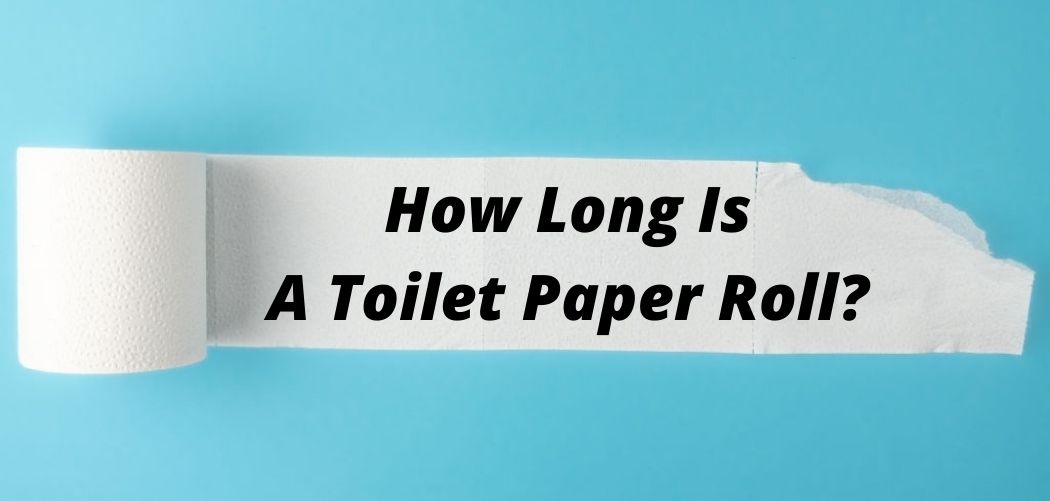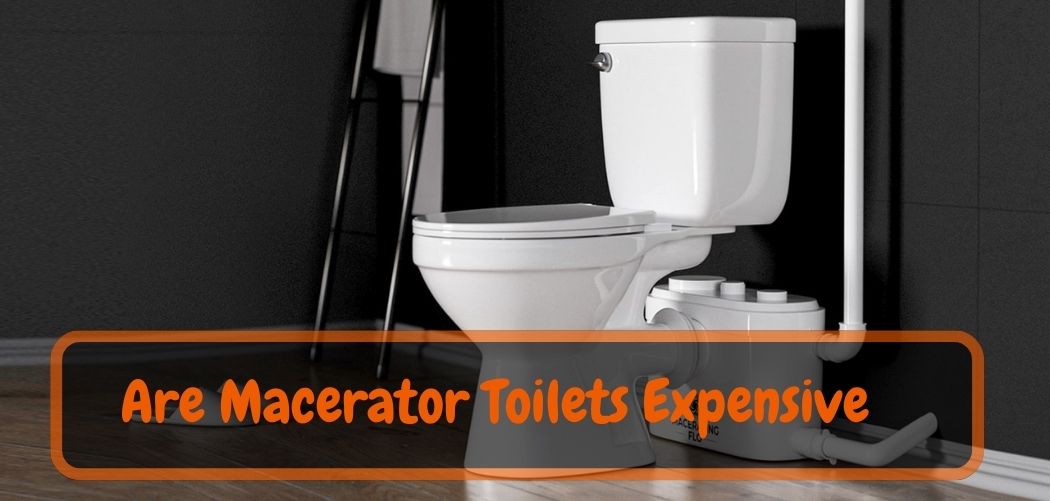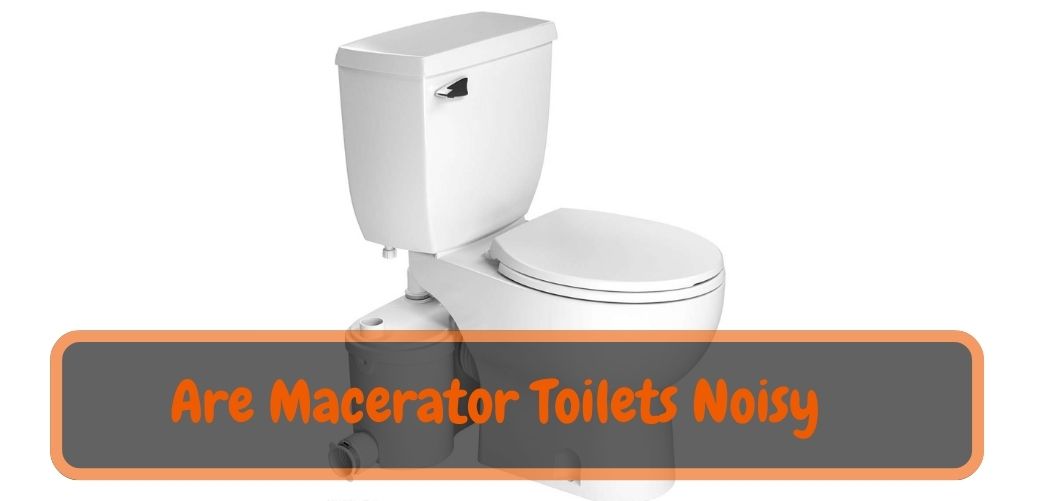A macerating toilet is designed to grind waste and pump it away, while a regular toilet sends the waste directly to the sewer line. If you’re planning a bathroom renovation, it’s important to choose the right type of toilet for your needs.
While traditional toilets are the most common option, there are also macerating toilets, which offer a number of benefits over the standard variety. A macerating toilet works by grinding up waste and then pumping it away from the toilet.
This allows you to install a toilet in a place where conventional plumbing isn’t available, such as a basement or attic. Additionally, macerating toilets don’t require extensive demolition work during installation, which can significantly cut down on renovation costs.
However, there are some drawbacks to using a macerating toilet, including higher upfront costs and the need for regular maintenance. In this article, we’ll take a closer look at the differences between macerating toilets and regular toilets, so you can decide which option is right for you.
Difference Between a Macerating Toilet and Regular Toilet
Here’s a simple table about “Highlighting the differences between a macerator toilet and a regular toilet:
| Feature | Macerator Toilet | Regular Toilet |
|---|---|---|
| Waste Disposal Mechanism | Grinds waste into a slurry using a macerator | Relies on gravity for waste disposal |
| Installation Flexibility | Can be installed in various locations | Limited to specific locations with plumbing connections |
| Ease of Installation | Generally easier to install | Standard installation but may require plumbing changes |
| Water Usage | May use less water per flush | Typically uses a standard amount of water per flush |
| Noise and Vibration | Can be noisier due to macerator operation | Usually quieter due to gravity-based flushing |
| Waste Handling | Can struggle with certain materials like wipes | Handles standard waste materials effectively |
| Dependency on Electricity | Requires electricity for operation | Does not require electricity for basic functionality |
| Maintenance Needs | Requires regular maintenance due to the macerator | Maintenance typically focuses on standard components |
| Cost | Initial cost may be higher due to the macerator | Standard initial cost |
| Space Requirements | Offers more flexibility in bathroom placement | Standard space requirements |
Keep in mind that the effectiveness and suitability of each type of toilet depend on individual preferences, home infrastructure, and specific requirements.
What Is the Point of a Macerating Toilet?
A macerating toilet is a type of toilet system that uses a macerator pump to break down waste and toilet paper into a slurry that can be easily pumped through small-diameter pipes to a sewage or septic system. The macerator pump is typically housed within the toilet unit or installed behind the toilet.
The key points and advantages of a macerating toilet are as follows:
1. Flexibility in Installation: Macerating toilets can be installed in locations where traditional gravity-flow toilets may not be feasible due to the lack of a direct connection to a sewage line or low plumbing capacity. They can be installed below the main sewer line, in basements, or in other areas with limited plumbing access.
2. Ease of Retrofitting: They are ideal for renovations or adding a bathroom to an existing structure because they require less invasive and costly modifications to the plumbing system.
3. Reduced Plumbing Requirements: Macerating toilets use smaller-diameter pipes compared to traditional toilets, reducing the amount of plumbing work needed during installation.
4. Efficient Waste Disposal: The macerator pump grinds waste and toilet paper into a fine slurry, allowing for easier and more efficient transport through the plumbing system.
5. Environmental Considerations: In some cases, macerating toilets can be more environmentally friendly by reducing water usage. Some models have options for reduced water consumption per flush compared to traditional toilets.
6. Quiet Operation: The macerator pump operates relatively quietly, contributing to a quieter bathroom environment.
7. Versatile Placement: Macerating toilets can be placed farther from the main sewer line or at a higher elevation, making them versatile in terms of placement within a building.
Is a Macerating Toilet a Good Idea?
Whether a macerating toilet is a good idea depends on the specific circumstances and needs of the situation. Here are some factors to consider when evaluating if a macerating toilet is a good fit:
1. Location and Plumbing Constraints:
Macerating toilets are a good option in locations where installing a traditional gravity-flow toilet is difficult due to limited access to a sewage line or plumbing capacity. If you’re retrofitting a bathroom in a basement or in a space far from the main sewer line, a macerating toilet can be a practical solution.
2. Cost Considerations:
Assess the upfront and long-term costs associated with a macerating toilet. While they can be more expensive to purchase and install initially, they may save on plumbing modification costs in the long run if significant alterations to the existing plumbing system are required for a conventional toilet.
3. Environmental Impact:
Consider the water-saving features of some macerating toilets. If water conservation is a priority in your location, opting for a macerating toilet with low water consumption per flush could be an eco-friendly choice.
4. Maintenance and Reliability:
Take into account the maintenance requirements and potential repairs associated with macerating toilets. They may need more frequent maintenance and could be more prone to mechanical issues compared to standard toilets. Consider if you are willing to manage and maintain the macerator pump.
5. Usage and Capacity:
Evaluate the expected usage and capacity needs. Macerating toilets may have limitations on the amount and type of waste they can effectively macerate. Ensure it can handle the expecte usage, and educate users on what can and cannot be flush to avoid problems.
6. Noise and Aesthetics:
Consider the noise level during operation and whether it’s acceptable for the intended space. Additionally, evaluate if the appearance and design of the macerating toilet align with your aesthetic preferences.
7. Local Regulations and Codes:
Check with local building codes and regulations to ensure that a macerating toilet is compliant with requirements in your area.
In summary, a macerating toilet can be a good idea in specific scenarios, especially when dealing with challenging plumbing situations or where water conservation is a priority. However, careful consideration of the factors mentioned above, as well as your specific needs and circumstances, is essential to determine if a macerating toilet is the right choice for you. Consulting with a plumber or building professional can also provide valuable insights and guidance.
Also Read: Maintaining Cleanliness: A Guide to Cleaning a Macerating Toilet?
Macerating Toilet Pros and Cons
Here’s a simple table about “the pros and cons of macerating toilets:
| Pros of Macerating Toilets | Cons of Macerating Toilets |
|---|---|
| 1. Flexible Installation: Macerating toilets can be installed in locations with limited access to main sewer lines, making them suitable for basements and remote areas. | 1. Cost: Initial purchase and installation costs can be higher than traditional toilets due to the macerator pump and associated components. |
| 2. Easy Retrofitting: Ideal for renovations or adding bathrooms to existing structures, requiring less invasive modifications to plumbing systems. | 2. Maintenance: Macerating toilets may require more maintenance and are prone to mechanical issues compared to regular toilets. |
| 3. Environmental Considerations: Some models offer water-saving options, contributing to water conservation efforts. | 3. Noise: Macerating toilets can be louder during operation due to the macerator pump. |
| 4. Efficient Waste Disposal: Grinds waste into a slurry, making it easier to pump through smaller-diameter pipes and reducing plumbing requirements. | 4. Capacity Limitations: Limited in handling large amounts or certain types of waste, requiring caution in usage. |
| 5. Versatile Placement: Can be installed farther from the main sewer line or at higher elevations, providing flexibility in placement within a building. | 5. Odor Issues: If not properly installed or maintained, macerating toilets can emit unpleasant odors. |
Keep in mind that the actual pros and cons may vary based on the specific brand, model, and design of the macerating toilet. It's essential to consider individual needs and circumstances when evaluating whether a macerating toilet is the right choice.
Also Read: Unveiling the Mystery: How Macerating Toilets Work?
Can You Use Macerator as Main Toilet?
Yes, a macerating toilet can use as the main toilet in a bathroom. In fact, in many cases, macerating toilets are installe as the primary toilet when traditional gravity-flow toilets are not feasible due to plumbing constraints, such as in basements, crawl spaces, or areas with limited access to a main sewer line.
Macerating toilets work by macerating waste and toilet paper into a fine slurry using a macerator pump. This slurry is then pump through smaller-diameter pipes to connect with the main sewage or septic system.
While they use a different mechanism to dispose of waste compared to traditional gravity-flow toilets, they function as fully functional toilets and can handle the same types of waste.
When considering using a macerating toilet as the main toilet, it’s important to:
1. Ensure Proper Installation: Proper installation is crucial to ensure the macerating toilet functions effectively and safely. It should installed according to the manufacturer’s guidelines and any local building codes.
2. Size and Capacity: Select a macerating toilet that meets the size and capacity requirements for the intended usage. Different models have varying capacities, so choose one that suits your household’s needs.
3. Maintenance and Care: Regular maintenance and care of the macerating toilet are essential to prevent clogs, maintain efficiency, and prolong its lifespan. Follow the manufacturer’s maintenance recommendations.
4. Understand Limitations: Be aware of any limitations the macerating toilet may have in terms of the types and amounts of waste it can handle. Educate users about proper usage to prevent issues.
Overall, a macerating toilet can serve as a reliable and functional main toilet in various residential or commercial settings, providing a solution for challenging plumbing installations or renovations where a traditional gravity-flow toilet is not practical.
Also Read: Uncovering the Mystery: Macerating Toilets Drain to Where?
Do Macerating Toilets Smell?
Macerating toilets, like any other type of toilet, are designe to contain and eliminate odors effectively. When properly installed, used, and maintained, macerating toilets should not produce any more unpleasant odors than traditional gravity-flow toilets.
However, if you notice persistent or strong odors coming from a macerating toilet, it could be due to several factors:
1. Improper Installation or Sealing: If the macerating toilet is not installe correctly or if there are sealing issues, odors from the sewage or waste can escape. Ensure proper installation and appropriate sealing to prevent this.
2. Maintenance Issues: Lack of regular maintenance or failure to follow the manufacturer’s maintenance guidelines can lead to odors. The macerator pump and associated components need to clean and maintained to function properly and minimize odors.
3. Ventilation: Adequate ventilation is essential to prevent odors from building up in the plumbing system. Make sure that the ventilation system for the macerating toilet is functioning properly.
4. Proper Waste Disposal: Only appropriate waste and toilet paper should flush down a macerating toilet. Anything else, like foreign objects or items that are difficult to macerate, can cause odors and issues.
5. Septic System Issues: If your macerating toilet is connecte to a septic system, problems with the septic tank or system can cause odors. Regular septic tank maintenance is crucial to prevent odors and maintain proper functionality.
To prevent potential odors with a macerating toilet, adhere to regular maintenance schedules, follow manufacturer instructions, and ensure the system is correctly installed and adequately ventilated. If you experience persistent odors or issues, it's advisable to contact a plumber or technician to inspect the system and address any problems.
Also Read: Are Macerating Toilets Bad for Septic Systems?
FAQ:What Difference Between A Macerating Toilet and Regular toilet see More:
Q1: What is the difference between a macerating toilet and a Saniflo toilet?
A macerating toilet is a type of toilet that uses a macerator pump to break down waste and toilet paper into a slurry before pumping it through small-diameter pipes to a sewage or septic system. Saniflo is a popular brand of macerating toilet systems. Therefore, the primary difference is that a Saniflo toilet is a specific brand of macerating toilet.
Q2: Macerator Toilet Problems: What are common issues with macerating toilets and how can they be addressed?
Common macerator toilet problems include clogs, pump malfunctions, and unpleasant odors. Clogs can often be prevente by ensuring proper waste disposal, while maintenance and regular cleaning can help address other issues. Consulting a professional plumber may be necessary for more complex problems.
Q3: How does a macerator toilet work?
A macerator toilet works by using a macerator pump to grind waste and toilet paper into a fine slurry, allowing for easy transport through smaller-diameter pipes. The macerator pump typically activates when the toilet is flush, breaking down the waste and pumping it into the plumbing system.
Q4: What are the best macerating toilets available in the market?
Determining the “best” macerating toilet depends on individual preferences, needs, and budget. Some popular macerating toilet brands include Saniflo, Liberty Pumps, and Thetford. Researching and comparing features, reviews, and specifications can help in selecting the most suitable option.
Q5: Macerating Toilet Building Regulations: What are the regulations and codes for installing a macerating toilet in a building?
Building regulations for installing a macerating toilet may vary by location. It’s important to consult local building codes and authorities to ensure compliance with regulations regarding plumbing, waste disposal, ventilation, and other relevant aspects of installation.
Q6: What is a macerating RV toilet?
A macerating RV toilet is a type of toilet specifically designe for recreational vehicles (RVs). Similar to other macerating toilets, it uses a macerator pump to break down waste into a slurry for efficient disposal into the RV’s plumbing system. This design is ideal for RVs where traditional plumbing connections may not be feasible.
Closing Remark:
To recap, a macerating toilet sets itself apart by employing a macerator pump to grind waste and toilet paper into a slurry. This slurry is then pump through smaller pipes, offering installation flexibility and easier waste disposal in challenging locations.
In contrast, regular gravity-flow toilets rely on gravity and larger-diameter pipes for waste transport, limiting installation options and requiring a direct connection to the main sewage or septic system.








